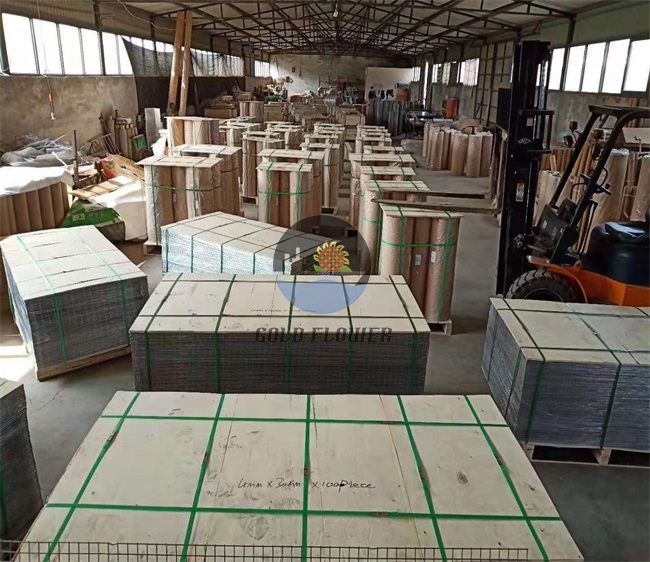Aug . 12, 2024 04:06 Back to list
Understanding CE Certification for Solid Wire Mesh Products and Its Importance in Construction Standards
Understanding CE Certification for Solid Wire Mesh
In today’s global marketplace, product safety and compliance with regulations are paramount for manufacturers and consumers alike. One significant mark of quality and safety is the CE certification, especially for construction materials like solid wire mesh. This article will delve into the importance of CE certification for solid wire mesh, the certification process, and its impact on the construction industry.
What is Solid Wire Mesh?
Solid wire mesh, often used in construction, agriculture, and various industrial applications, is a grid-like structure made from interwoven steel or other metallic wires. It serves multiple purposes, including providing structural support, enhancing safety, and fulfilling various aesthetic requirements. The versatility of solid wire mesh makes it a popular choice for applications such as fencing, flooring, and even as reinforcement in concrete.
The Importance of CE Certification
CE marking indicates that a product conforms to European safety, health, and environmental protection standards. For solid wire mesh, CE certification assures consumers and regulatory bodies that the product meets essential safety requirements and can be used within the European Economic Area (EEA). The significance of this certification can be highlighted through several key points
1. Quality Assurance CE certification provides a significant level of reassurance regarding the quality of solid wire mesh. Manufacturers must demonstrate that their products have been tested and meet specific standards, ensuring that they are reliable and safe for use in various applications.
2. Market Access For manufacturers wishing to sell their products in Europe, obtaining CE certification is essential. Without this certification, products cannot be legally sold within the EEA, limiting market access and sales opportunities.
3. Consumer Confidence For consumers, CE marking builds trust in the product. It assures them that the solid wire mesh they are purchasing has been rigorously tested for safety and performance, which can influence purchasing decisions.
ce certification solid wire mesh

4. Improved Safety The safety of construction materials is critical in preventing accidents and ensuring the integrity of built structures. CE certification requires compliance with strict safety standards, thus playing a vital role in reducing risks associated with using substandard materials.
The CE Certification Process
The journey to obtaining CE certification for solid wire mesh involves several steps
1. Product Testing Manufacturers must ensure that their products undergo rigorous testing in accordance with relevant directives and standards. This testing verifies that the solid wire mesh meets performance and safety criteria.
2. Technical Documentation Manufacturers must compile technical documentation that outlines how the product complies with CE requirements. This information should be thorough and readily available for inspection.
3. Declaration of Conformity After successfully completing testing, manufacturers must create a Declaration of Conformity, stating that the solid wire mesh meets all applicable requirements. This document serves as an official claim that the product is compliant with EU regulations.
4. Marking Once all steps are completed, the CE mark can be affixed to the product. This marking signifies compliance and readiness for the European market.
Conclusion
CE certification for solid wire mesh is a crucial aspect of ensuring product safety, quality, and market access within the European Economic Area. As construction materials play a significant role in the integrity of structures, manufacturers must prioritize obtaining this certification to build consumer trust and ensure compliance with stringent safety standards. In a world where quality and safety cannot be compromised, CE marking stands as a beacon of reliability for solid wire mesh products.
share
-
Safety Mesh for Windows – Durable Mosquito and Insect Protection Solutions
NewsJul.08,2025
-
12x24x1 Air Filter – High Efficiency Replacement for Improved Air Quality
NewsJul.08,2025
-
Premium Stainless Steel Mosquito Mesh - Durable, Rust-Resistant Protection for Windows & Doors
NewsJul.08,2025
-
Premium Stainless Steel Garden Mesh for Lasting Durability Best & High Quality Mesh Solutions
NewsJul.07,2025
-
Gold and White Blackout Curtains – Elegant Light Blocking & Insulation for Home
NewsJul.07,2025
-
Premium Spa Filter Cartridge for Clean Water Spa Pool Filters Cartridges for Jacuzzi Durable, high-efficiency spa filter cartridge for spas and jacuzzis. Improve water quality—order your pool filter cartridge now!
NewsJul.07,2025

